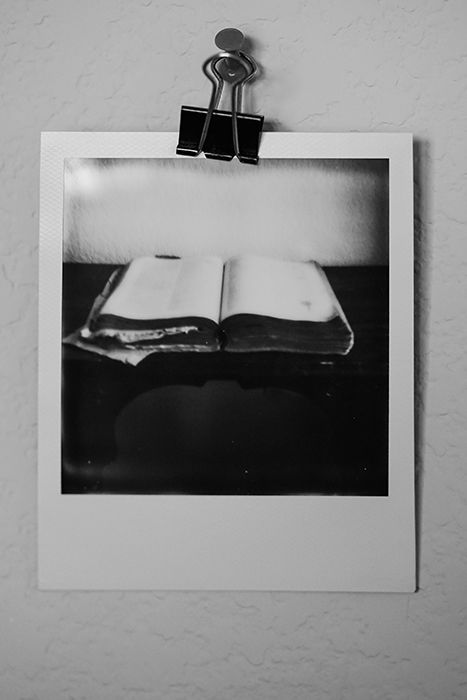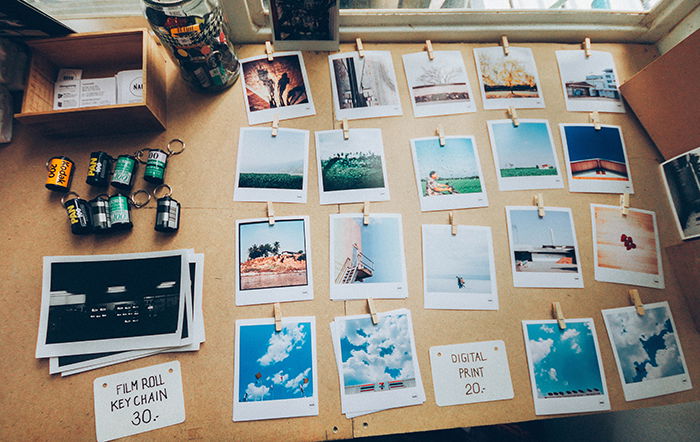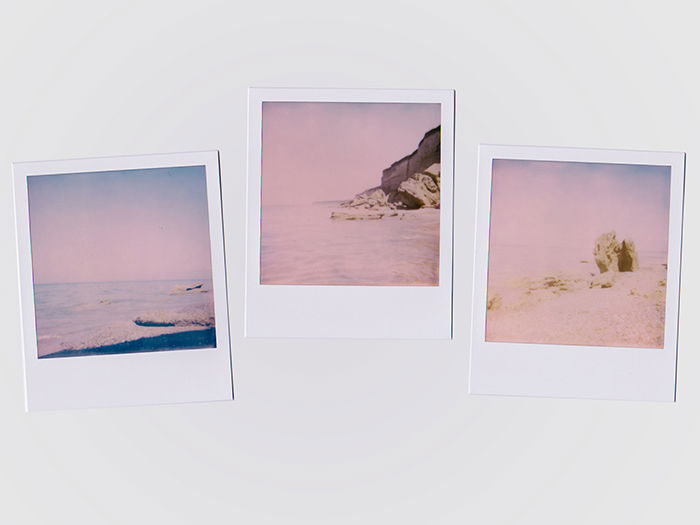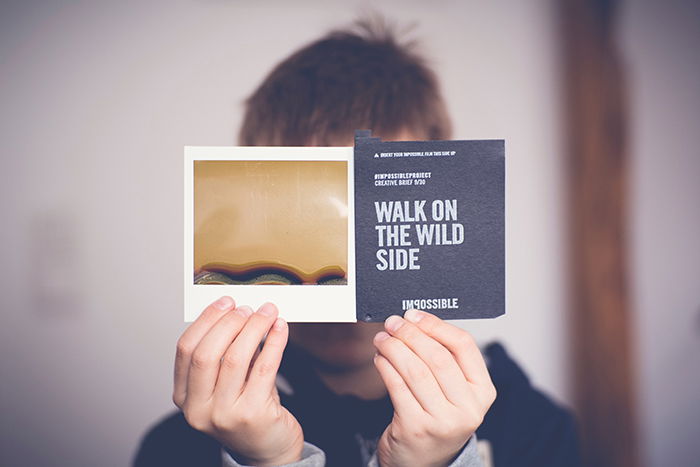Polaroid cameras may be a thing of the past, but that doesn’t mean you can’t create some amazing images with them. In fact, thanks to the resurgence of analog photography, there are more ways than ever to use a polaroid camera creatively. Here are seven of our favorite Polaroid ideas.

This is one of the easiest Polaroid picture ideas. All you need is a blunt tool (such as the other end of a brush) and a fresh Polaroid picture. The reason your Polaroid should be fresh is that it’s soft and easy to manipulate when it hasn’t developed.
As soon as your Polaroid comes out, gently put pressure on the image with your tool. You can write something or simply doodle. This is a great way to add texture and uniqueness to simple photography.
You can draw either directly on your image or behind it. The more pressure you put, the stronger the lines will be. Be careful with strong lines as they can damage your Polaroid.

You can create texture in empty spaces to make your Polaroids look more interesting. Put your Polaroid photography on a rough surface like sandpaper. Draw on your Polaroid using a blunt tool to avoid damaging the picture.
The texture will immediately transfer to your image.
If you want to try extra creative photography ideas, you can use different tools to bring out the texture. Try ideas such as painting over your photo, using a marker, or highlighting certain parts of your photography.

Right before your Polaroid has completely developed, use a blunt tool to warp the subjects in your image. Gently push an area on your Polaroid to move it to the side.
This isn’t as effective as the warp tool in Photoshop, but its subtlety can help you improve your photography.
(This effect won’t work on every kind of Polaroid/Instax film. You can definitely achieve it with Polaroid Time-Zero Film, but there is no previous experience with other films.)

Transparent DIY Polaroid photos can be a great addition for photo displays, scrapbooks, photo board ideas, and creative photography projects.
Take a developed Polaroid. (You can also use Instax pictures.) Use a box cutter knife to cut the sides and the bottom of your Polaroid.
Once you cut the bottom, you’ll see a flap. Gently peel it off so that your image doesn’t rip apart. Once you reach the top, cut it off with the knife. Your result will be a perfectly transparent image.
Extra inspiration ideas: you can put one transparent Polaroid over another to re-create the double exposure photography effect.

Emulsion lift may sound fancy, but it’s one of our simple ideas that any photographer can try. You need a tray of water, a small brush, and watercolor paper. Your Polaroid picture should be fresh so that you can manipulate it properly.
Start by cutting the border of the Polaroid. Peel off the image and dip it in the water. Once it soaks up some water, use a brush to separate your photo from the layer it’s attached to. You should end up with a floating photo.
Remove the layer you separated and leave your photo in the tray. Put a sheet of watercolor paper in the tray. You can use any kind of paper as long as it’s watercolor paper. Using your brush, transfer the Polaroid to the paper.
Get creative and move the photo around with your brush to warp it. You can also manipulate its borders to make it look like old, vintage photography.
And you’re done! Store your new image in a dry place and keep it away from sunlight.

One of the golden rules of Polaroid photography is not to expose your pictures to sunlight. You can break this rule if you want your photos to look soft and dreamy. This is a handy effect for portrait and landscape photography.
When your Polaroid comes out, put it in a sunny place. You can also shake the Polaroid (something you shouldn’t typically do) to create a damaged effect.

If you have a few Polaroid outtakes that you don’t mind damaging, this Polaroid picture idea is perfect for you. The goal is to soak your Polaroid in different kinds of liquids. This will create a chemical reaction that could change the color and overall look of your images.
The results are often abstract and are ideal for creative photography experiments.
You can soak your Polaroids in colored water, soap, ink, or alcohol. You can also use an eyedropper (or anything similar) to manipulate small parts of your Polaroid photo.
Make sure that the substance you use is safe and non-toxic.
Yes. You can cut some Polaroids to achieve the transparency effect. Always be careful when you cut a Polaroid. Most Polaroids contain toxic chemicals that can damage your skin or your eyes. Make sure you wear gloves when you cut any kind of Polaroid pictures.
Polaroid filed for bankruptcy several times in the past. In 2008, Polaroid had to stop its production of analog cameras and film.
However, a few years later, it returned with a variety of new instant cameras. Today, it’s a successful company that sells cameras, creative film, sunglasses, and other products.
The emulsion lift technique is very easy. All you need is a water tray, watercolor paper, and a small painting brush. Cut your Polaroid, dip it in the water, and separate it from the layer it’s attached to. Gently transfer the floating photograph to a sheet of watercolor paper.
Polaroids fade as much as any other analog photograph. You can stop the fading process by storing them in special albums. You should also keep your Polaroids away from moisture and sunlight to slow down the ageing process.
Some photographers believe that shaking a Polaroid picture will help it develop faster.
The Polaroid company says that this is a bad idea. Too much shaking can actually damage your Polaroid. Put your Polaroid in a safe place (where there’s no sunlight), so it can develop properly.
These creative Polaroid picture ideas can help you take your Polaroid photography to the next level. Experiment with different techniques, combine your favourite ideas, and remember to have fun!
